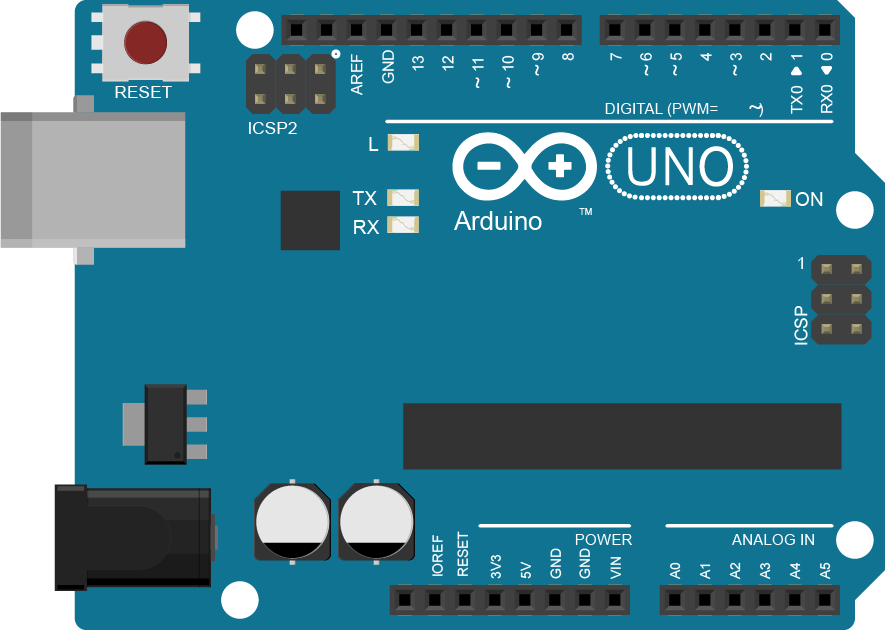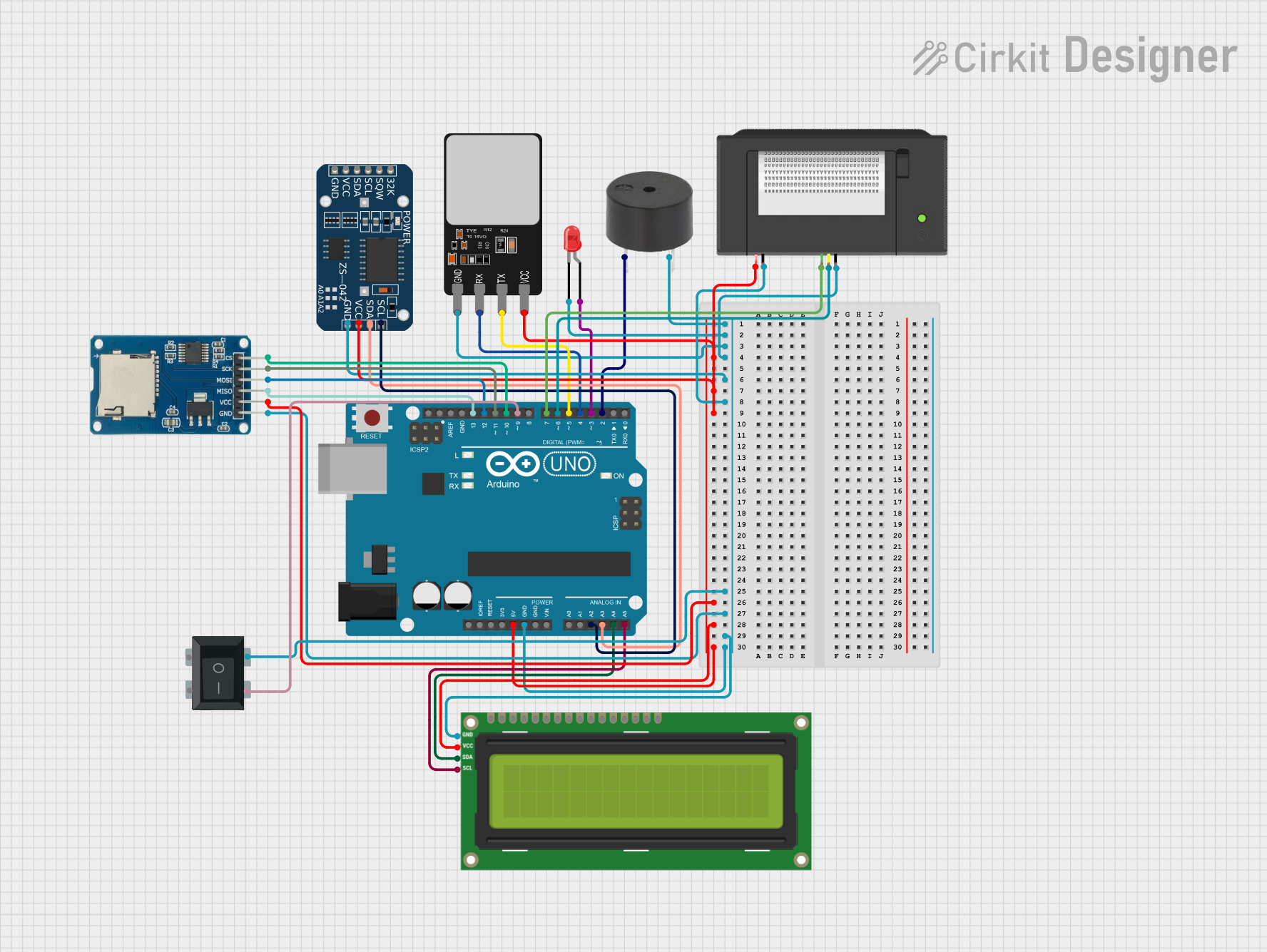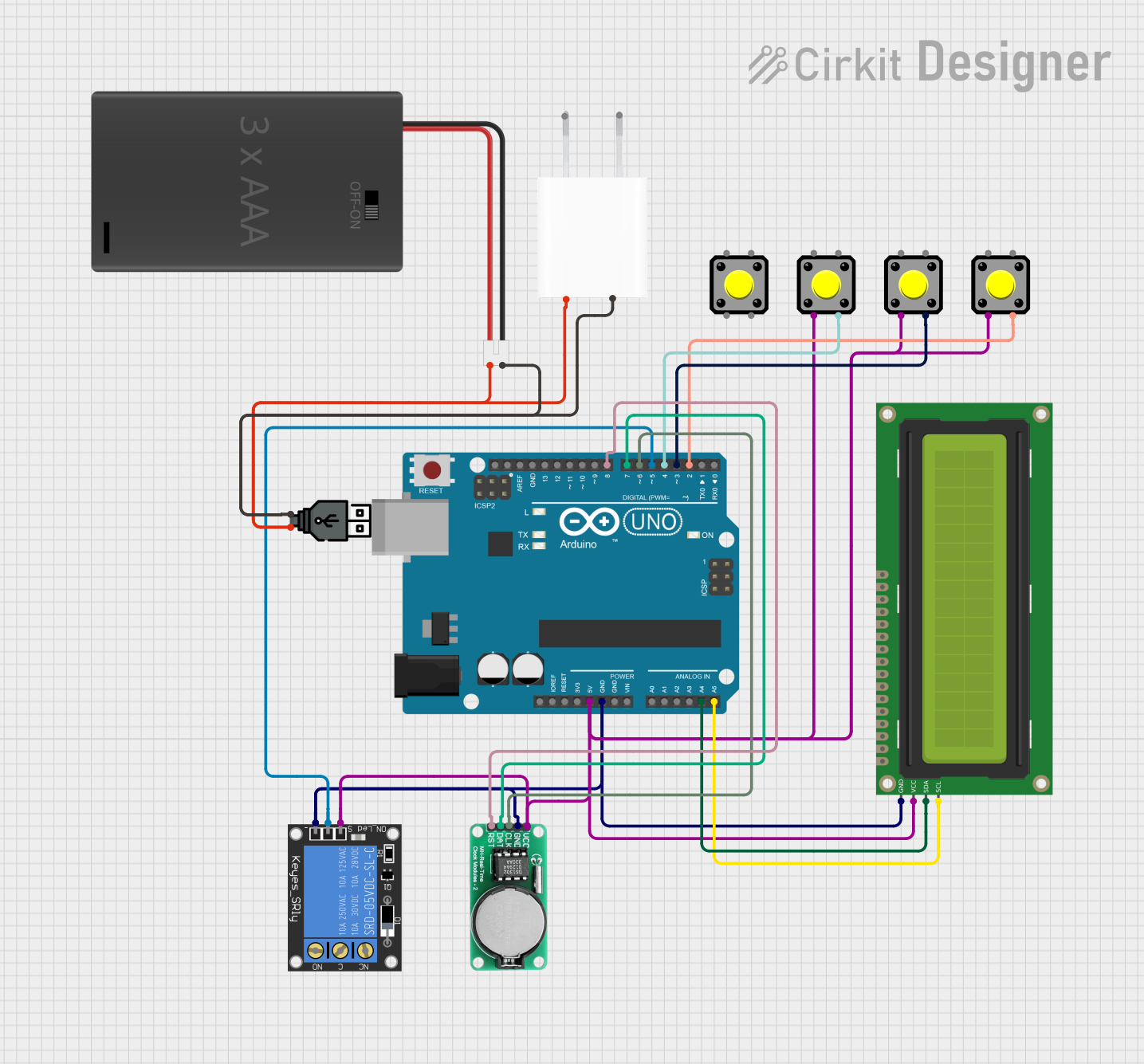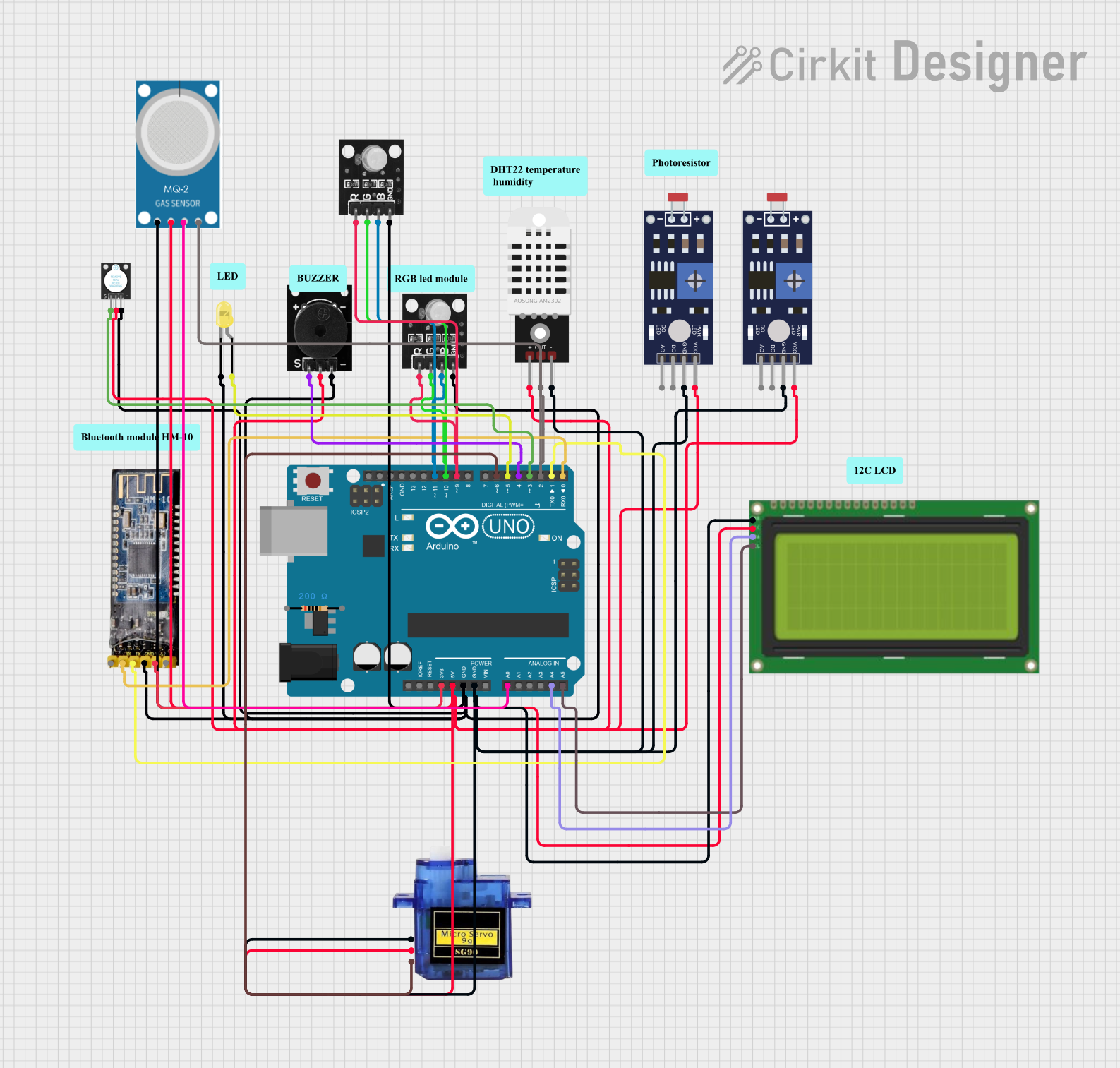
How to Use Arduino UNO: Examples, Pinouts, and Specs

 Design with Arduino UNO in Cirkit Designer
Design with Arduino UNO in Cirkit DesignerIntroduction
The Arduino UNO is a microcontroller board based on the ATmega328P. It is one of the most popular and versatile development boards in the Arduino ecosystem, widely used for building digital devices and interactive objects that can sense and control the physical world. Its ease of use, extensive community support, and compatibility with a wide range of sensors and actuators make it an excellent choice for beginners and professionals alike.
Explore Projects Built with Arduino UNO

 Open Project in Cirkit Designer
Open Project in Cirkit Designer
 Open Project in Cirkit Designer
Open Project in Cirkit Designer
 Open Project in Cirkit Designer
Open Project in Cirkit Designer
 Open Project in Cirkit Designer
Open Project in Cirkit DesignerExplore Projects Built with Arduino UNO

 Open Project in Cirkit Designer
Open Project in Cirkit Designer
 Open Project in Cirkit Designer
Open Project in Cirkit Designer
 Open Project in Cirkit Designer
Open Project in Cirkit Designer
 Open Project in Cirkit Designer
Open Project in Cirkit DesignerCommon Applications and Use Cases
- Prototyping and development of IoT (Internet of Things) devices
- Robotics and automation projects
- Data acquisition and environmental monitoring
- Home automation systems
- Educational purposes for learning programming and electronics
Technical Specifications
The Arduino UNO is designed to provide a balance of performance, simplicity, and flexibility. Below are its key technical details:
General Specifications
| Parameter | Value |
|---|---|
| Microcontroller | ATmega328P |
| Operating Voltage | 5V |
| Input Voltage (recommended) | 7-12V |
| Input Voltage (limit) | 6-20V |
| Digital I/O Pins | 14 (6 provide PWM output) |
| Analog Input Pins | 6 |
| DC Current per I/O Pin | 20 mA |
| Flash Memory | 32 KB (0.5 KB used by bootloader) |
| SRAM | 2 KB |
| EEPROM | 1 KB |
| Clock Speed | 16 MHz |
| USB Connector | Type-B |
| Dimensions | 68.6 mm x 53.4 mm |
Pin Configuration and Descriptions
The Arduino UNO has a total of 28 pins, including digital, analog, power, and communication pins. Below is a detailed description of the pin configuration:
Digital Pins
| Pin Number | Functionality |
|---|---|
| 0 (RX) | Serial Receive (UART communication) |
| 1 (TX) | Serial Transmit (UART communication) |
| 2-13 | General-purpose digital I/O |
| 3, 5, 6, 9, 10, 11 | PWM output pins |
Analog Pins
| Pin Number | Functionality |
|---|---|
| A0-A5 | Analog input pins (10-bit resolution) |
Power Pins
| Pin Name | Functionality |
|---|---|
| VIN | Input voltage to the board (7-12V) |
| 5V | Regulated 5V output |
| 3.3V | Regulated 3.3V output |
| GND | Ground |
| RESET | Resets the microcontroller |
Communication Pins
| Pin Name | Functionality |
|---|---|
| SDA | I2C Data |
| SCL | I2C Clock |
| SPI Pins | MOSI, MISO, SCK |
Usage Instructions
The Arduino UNO is straightforward to use and can be programmed using the Arduino IDE. Below are the steps to get started and some best practices:
Getting Started
- Install the Arduino IDE: Download and install the Arduino IDE from the official website.
- Connect the Arduino UNO: Use a USB Type-B cable to connect the board to your computer.
- Select the Board and Port:
- Open the Arduino IDE.
- Go to
Tools > Boardand select "Arduino UNO." - Go to
Tools > Portand select the appropriate COM port.
- Write and Upload Code:
- Write your code in the Arduino IDE.
- Click the "Upload" button to upload the code to the board.
Example Code: Blinking an LED
The following example demonstrates how to blink an LED connected to pin 13 of the Arduino UNO.
// This example code blinks the built-in LED on pin 13 of the Arduino UNO.
// The LED will turn on for 1 second and off for 1 second in a loop.
void setup() {
pinMode(13, OUTPUT); // Set pin 13 as an output pin
}
void loop() {
digitalWrite(13, HIGH); // Turn the LED on
delay(1000); // Wait for 1 second
digitalWrite(13, LOW); // Turn the LED off
delay(1000); // Wait for 1 second
}
Important Considerations and Best Practices
- Power Supply: Use a regulated power supply within the recommended range (7-12V) to avoid damaging the board.
- Avoid Overloading Pins: Do not exceed the maximum current rating (20 mA) for any I/O pin.
- Static Protection: Handle the board carefully to avoid damage from static electricity.
- Use External Pull-up Resistors: For reliable input readings, use pull-up or pull-down resistors as needed.
Troubleshooting and FAQs
Common Issues and Solutions
The board is not detected by the computer:
- Ensure the USB cable is properly connected.
- Try a different USB cable or port.
- Install the necessary drivers for the Arduino UNO.
Code upload fails:
- Check that the correct board and port are selected in the Arduino IDE.
- Press the RESET button on the board before uploading.
- Ensure no other program is using the COM port.
The board is not powering on:
- Verify the power source (USB or external power supply).
- Check for loose connections or damaged components.
Incorrect or no output from pins:
- Double-check the wiring and connections.
- Ensure the pin mode is correctly set in the code.
FAQs
Q: Can I power the Arduino UNO with batteries?
A: Yes, you can power the Arduino UNO using a 9V battery connected to the VIN pin or the DC power jack.
Q: What is the maximum current the board can supply?
A: The 5V pin can supply up to 500 mA when powered via USB and up to 1A when powered through an external power source.
Q: Can I use the Arduino UNO for wireless communication?
A: Yes, you can use wireless modules like the HC-05 Bluetooth module or ESP8266 Wi-Fi module with the Arduino UNO.
Q: Is the Arduino UNO compatible with shields?
A: Yes, the Arduino UNO is compatible with a wide range of shields designed for the Arduino ecosystem.
By following this documentation, you can effectively use the Arduino UNO for a variety of projects and applications.